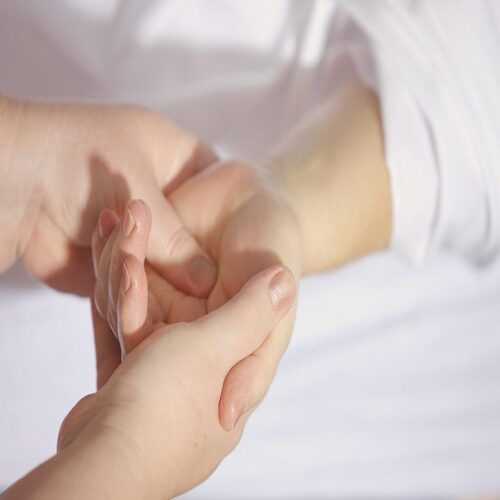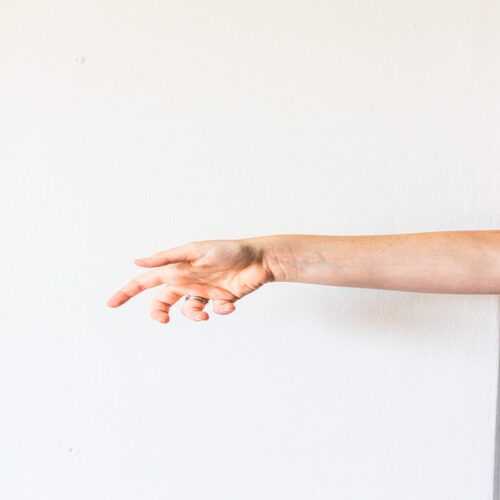Dupuytren’s contracture is a progressive hand disease that can cause deformity and disability. It occurs when nodules form in the palm of the hand and progress to cords that tighten and shorten, limiting hand movement. While there is no cure for Dupuytren’s contracture, treatments are available to improve symptoms and function. This article will provide an overview of the causes, symptoms, and treatments for Dupuytren’s contracture.
The most common symptom of Dupuytren’s contracture is a thickening or lump in the palm of your hand that may be tender. As the condition progresses, the lump may turn into a cord-like structure. The cord is usually firm and thick and can pull one or more fingers into a bent position.
Other symptoms of Dupuytren’s contracture include:
If you have any of these symptoms, see your doctor. He or she can examine your hand and confirm the diagnosis.
ALSO READ: 10 Symptoms Of Psychosis

There are a number of options available to get Dupuytren’s contracture treated, ranging from non-surgical to surgical. Nonsurgical treatments include splinting, physical therapy, and medication. Surgery is typically reserved for more severe cases that have not responded to nonsurgical treatment.
One non-surgical treatment option for Dupuytren’s contracture is splinting. A splint is a device that helps to hold the affected finger in place, preventing it from bending. Splinting can help to stretch out the tissue and break up the fibrous bands that are causing the contracture.
Another non-surgical treatment option for Dupuytren’s contracture is physical therapy. Physical therapy can help to stretch and strengthen the muscles and tendons around the affected finger. This can help to break up the fibrous bands in the thickened tissue and improve the range of motion.
There are a number of medications that can be used to treat Dupuytren’s contracture. These include:
ALSO READ: The Types, Diagnosis, and Treatment of Blood Cancer
Surgery is typically reserved for more severe cases of Dupuytren’s contracture that have not responded to nonsurgical treatment. There are a number of different surgical procedures that can be used, depending on the severity of the condition. Some conditions might require a skin graft after the surgery procedure.

Needling is a minimally invasive treatment option for Dupuytren’s contracture. It involves the use of fine needles to break up the thickened collagen deposits in the palm that are causing the fingers to bend inward. Needling can be performed as an outpatient procedure and does not require any stitches.
Needling works by breaking up the thickened collagen deposits in the palm that are causing the fingers to bend inward. The needles used for needling are very thin and are inserted into the palm through small incisions. Once the needles are in place, they are used to break up the collagen deposits. This process can be done manually, or with the help of a machine. Needling is usually performed as an outpatient procedure and does not require any stitches.
ALSO READ: 10 Symptoms And Treatments Of Tick Bites
This is typically used in combination with needle aponeurotomy for the treatment of Dupuytren’s contracture. Enzyme injection is thought to work by breaking down the collagen deposits in the palm that are causing the fingers to bend inward. Enzyme injections are usually performed as an outpatient procedure and do not require any stitches.
There are a few risks associated with enzyme injections, such as pain, infection, and allergic reaction. Enzyme injections are typically well-tolerated, however, and the risk of serious complications is low.
There are a number of lifestyle changes and home remedies that may help to lessen the symptoms of Dupuytren’s contracture. In some cases, these methods may even help to prevent the condition from worsening.
One simple measure that can be taken is to avoid activities that put unnecessary stress on the hands and fingers. This includes activities such as heavy lifting, which can exacerbate the condition.
Additionally, it is important to keep the hands and fingers warm and dry. This means avoiding exposure to cold temperatures and excessive moisture. Wearing gloves when outdoors in cold weather or while engaging in activities that involve water is often recommended.
There is no known cure for Dupuytren’s contracture. However, the condition can sometimes improve on its own, particularly in cases where it is mild. In more severe cases, treatment may be necessary to prevent the condition from progressing.
The cause of Dupuytren’s contracture is unknown. It tends to run in families, so there may be a genetic component. People with diabetes and those who drink heavily are at increased risk. Asides from these risk factors, the condition is more common in men than women and usually affects people over the age of 50.
If Dupuytren’s contracture is left untreated, the affected finger or fingers will gradually become permanently bent. This can make it difficult to do everyday activities such as putting on clothes or washing your hands. In severe cases, as the disease progresses, the contracture can affect your ability to grip objects or make a fist.
Although Dupuytren’s contracture cannot be cured, it can be managed with the right treatment. If you are experiencing any of the symptoms associated with this condition, please see a doctor as soon as possible for diagnosis and treatment options.
ALSO READ: Signs and Symptoms of Scoliosis